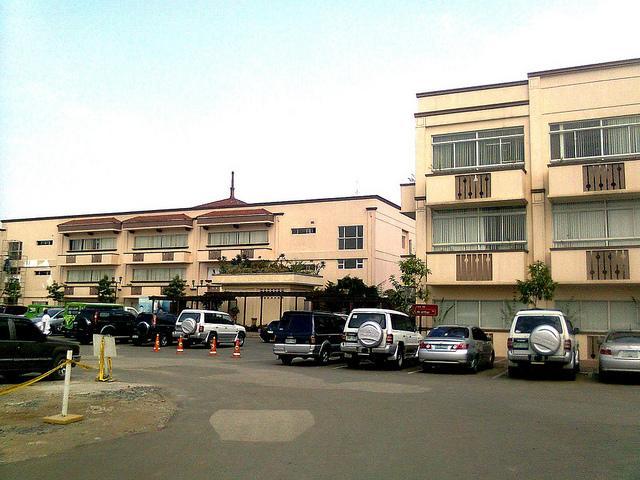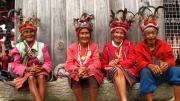
Valenzuela City Hall Complex in Barangay Malinta
A former agricultural rural area and regarded as one of the country's top residential, cultural and business destinations, Valenzuela City has developed into a well-mixed, multicultural metropolis. The city has grown into a major economic and industrial center of the Philippines when a large number of industries relocated to the central parts of the city.
Know more about the city
Valenzuela in Spanish is a diminutive form of Valencia, Spain, which means "little Valencia". The name Valenzuela is also the surname of Pío Valenzuela, a Tagalog physician who was among the leaders of the Katipunan. He was one of the triumvirate of the Katipunan that started the Philippine Revolution against Spanish colonial authorities and was the former provisional chairman for the Katipunan.
Originally, Valenzuela was called Polo. The name Polo was derived from the Tagalog term pulô, meaning island, though the area was not entirely island an itself. The original town of Polo was blessed by the rivers from the north and Tullahan River on the south. Hence, the enclosed land was thought to be an island, so the early townsmen regarded the place as Pulô which later evolved into Polo done by Hispanization of the word.
Today, the term Polo only applies to the barangay of Polo, the birthplace of Dr. Pio Valenzuela himself, which is found in the city's first congressional district.
Ecology of the City
The vegetation in Valenzuela was originally covered with grasslands suitable for agriculture. Because of rapid development of industries and economy, land use converts grass covers into cemented roads. However, the government puts effort in preserving vegetation such as constructing community vegetable gardens and techno-demo farms all over the city. In 2003, these gardens numbered up to two functioning farms.
In 2007, ordinary fishing ponds in Tagalag and Coloong were transformed into fishing spots which attracts anglers every year for a prize catch. Fish tournaments are held every year to increase tourism and livelihood in the area.
In 2008, the Supreme Court of the Philippines mandated Regional Trial Court branch 171 as an environmental court handling all environment cases in Valenzuela. Thomas Hodge-Smith noted in 1939 that Valenzuela is rich of black tektites occurring in spherical and cylindrical shapes and are free of bubbles.
Flora and Fauna
Flora and fauna in Valenzuela includes the common plants and animals found in Luzon, such as domesticated mammals. The Department of Environment and Natural Resources Protected Areas and Wildlife Bureau declared a two-hectare mangrove/swampy area in Villa Encarnacion, Barangay Malanday as an ecotourism site. Every year, about 100 species of migratory birds such as Black-crowned Night Herons (Nycticorax nycticorax) and other native birds such as moor hen (Gallinula), swamp hen (Porphyrio) and Philippine Duck (Anas luzonica) flock the area. Wooden view decks are built to facilitate spectators, enthusiasts and visitors while having bird watching and counting activities.
Culture
"Himig Valenzuela" or "Valenzuela Hymn” is the official song of the city. It is sung during flag ceremonies of private and public schools as well as government institutions along with the Philippine national anthem, "Lupang Hinirang". The hymn was composed by Edwin Ortega. The hymn has the primary objective to promote unity, progress and patriotism among the city's citizens. City ordinance number 18 mandated all citizens of Valenzuela to sing the hymn in all meetings and public occasions.
Landmarks and Attractions
Even a young city like Valenzuela still has many historical and entertaining places to visit. These include the Arkong Bato, Harry C. Egbert Memorial, Libingan ng mga Hapon(Japanese Cemetery), Museo Valenzuela, National Shrine of Our Lady of Fatima, Residence of Valenzuela, San Diego de Alcala Church and its belfry, Valenzuela Astrodome, and Valenzuela City Convention Center.
One of the well-known bridges in Valenzuela is the Tullahan Bridge in Barangay Marulas that connects the city to Barangay Potrero in Malabon. Tullahan Bridge is part of MacArthur Highway that was built during the Spanish era as a way of transporting vehicles over the Tullahan River. In the span of years, it was renovated repeatedly, most recently in 2008.
Feasts and Holidays
In 2007, President Gloria Macapagal-Arroyo signed Republic Act number 9428, which sets February 14 of every year as a special non-working holiday to commemorate the cityhood of Valenzuela in 1998. On the same hand, November 7 of each year is declared by the city government as the city's foundation day, looking back at the establishment of then-Polo in 1621.
Each barangay in Valenzuela celebrates its own fiesta. Most of them launch celebrations during May and April to honor patron saints and for bountiful harvests. Listed below are the most notable feasts in Valenzuela that gained media as well as international attention.
Photo Gallery of Valenzuela City

Barangay Tagalag

Legislative Hall

Valenzuela City Social Hall

Valenzuela City Convention Center

National Shrine of Our Lady of Fatima

Museo ng Valenzuela

Bell Tower of San Diego De Alcala Church

Residence of Dr. Pio Valenzuela
Getting Around
When getting around the city, tourists have a lot of options. When traveling short distances, tricycles are a good choice. Another alternative is to take the jeep. This is the most common and most inexpensive transportation not only in the city but in the country. Tourists, who consider convenience a priority to expenses, can take a taxi.










